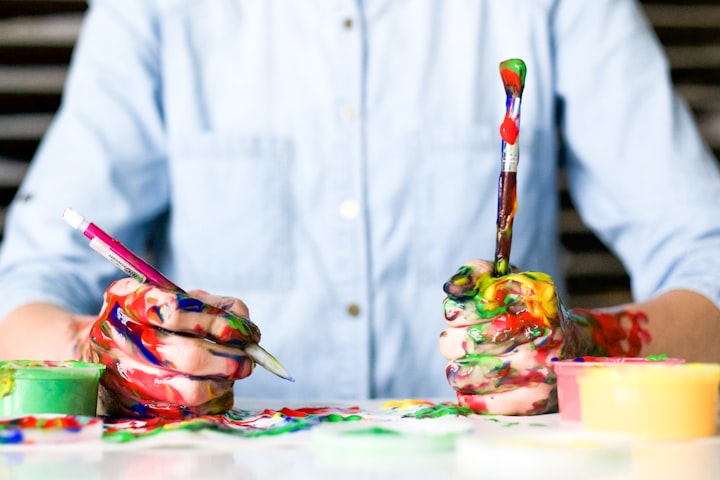Inside the World of Blockchain
Revolutionizing Art Ownership

Introduction:
In a world where art is not just an expression of creativity but also a valuable asset, ensuring ownership and authenticity becomes paramount. Historically, the art industry has faced challenges such as art forgery, counterfeit sales, and ownership disputes. However, with the emergence of blockchain technology, a groundbreaking solution has been found to revolutionize the way art is owned and transacted. In this article, we delve into the fascinating world of blockchain and its transformative impact on art ownership.
The Rise of Blockchain Technology:
Blockchain technology, best known as the backbone of cryptocurrencies like Bitcoin, is a decentralized and immutable digital ledger. Its unique characteristics have found applications beyond cryptocurrencies, and one such area is the art world. Blockchain offers a transparent, secure, and tamper-proof system, making it ideal for verifying ownership, provenance, and authenticity of artworks.
Eliminating Counterfeits and Art Forgery:
One of the most significant challenges faced by the art industry is the proliferation of counterfeits and art forgery. With blockchain, these issues can be effectively mitigated. By creating a digital record of every artwork, including its origin, creation date, artist, and previous owners, blockchain establishes an unalterable history. This transparent ledger allows potential buyers to trace an artwork's journey, ensuring its authenticity and protecting against counterfeit sales.
Securing Art Ownership:
Blockchain's decentralized nature ensures that art ownership is securely established and maintained. Traditionally, proving ownership of an artwork involved a convoluted process of paperwork, certificates, and reliance on intermediaries. With blockchain, each artwork is assigned a unique digital token known as a non-fungible token (NFT). These NFTs serve as digital certificates of ownership, recorded on the blockchain, and cannot be duplicated or tampered with. Thus, artists and collectors can now prove their ownership of a piece with ease and without the need for intermediaries.
Empowering Artists:
Blockchain technology has opened up new opportunities for artists to directly monetize their work and maintain control over their creations. Through the concept of tokenization, artists can divide their artworks into smaller fractions, called fractional ownership. These fractions can be sold to multiple investors, providing artists with immediate liquidity and a broader investor base. This democratization of the art market allows artists to reach a wider audience and retain a stake in the value appreciation of their work.
Globalizing Art Trade:
Traditionally, the art market has been limited by geographical boundaries, making it difficult for artists to gain international recognition and sell their works to a global audience. Blockchain technology has shattered these barriers by enabling digital marketplaces for art. These online platforms facilitate peer-to-peer transactions, eliminating intermediaries and reducing transaction costs. Moreover, blockchain's transparency instills confidence in buyers, as they can easily verify the authenticity and provenance of artworks from anywhere in the world.
Tokenizing Cultural Heritage:
Beyond modern art, blockchain is also transforming the preservation and authentication of cultural heritage. Many historical artifacts and artworks are vulnerable to theft, loss, or damage. By tokenizing these cultural assets on the blockchain, their ownership, provenance, and preservation can be securely documented and safeguarded. This ensures that future generations can appreciate and study our rich history, while also preventing illicit trade and preserving cultural identities.
Conclusion:
Blockchain technology has ushered in a new era for the art world, providing a secure and transparent system for art ownership, eliminating counterfeits, and empowering artists. Through blockchain's decentralized ledger and non-fungible tokens, artists and collectors can confidently navigate the art market with increased efficiency and reduced risk. With its potential to revolutionize art ownership, blockchain is poised to shape the future of the art industry, ensuring a fair and transparent ecosystem for all stakeholders involved.
About the Creator
Curtis Otiende
Unlock knowledge and inspiration in a world of captivating articles. Delve into science, history, arts, and more. Join a community of curious minds. Let's explore together!
Enjoyed the story? Support the Creator.
Subscribe for free to receive all their stories in your feed. You could also pledge your support or give them a one-off tip, letting them know you appreciate their work.





Comments
There are no comments for this story
Be the first to respond and start the conversation.